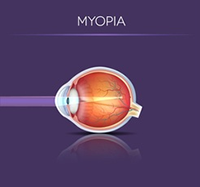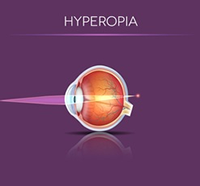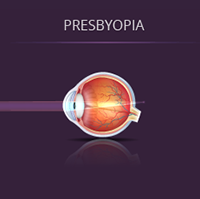 It is helpful to understand that cultivating knowledgeable expectations, which are realistic for your particular case, is central to your ultimate satisfaction with your LASIK procedure. While we provide some guidelines below, it is vital for each individual to weigh the benefits, complications, options and alternatives before deciding upon LASIK eye surgery.
It is helpful to understand that cultivating knowledgeable expectations, which are realistic for your particular case, is central to your ultimate satisfaction with your LASIK procedure. While we provide some guidelines below, it is vital for each individual to weigh the benefits, complications, options and alternatives before deciding upon LASIK eye surgery.
Become thoroughly knowledgeable about the LASIK procedure – its benefits, risks and probable outcomes – prior to undergoing LASIK surgery. Fully inform yourself and feel comfortable that you are making an educated decision based upon facts. Please keep in mind:
You are a living, breathing organism that is entirely unique, and who will in turn have entirely unique results.
LASIK generally does not address visual deficits that could not be corrected by your glasses or contacts. It likewise cannot provide perfect vision every time for every patient.
However, that said, the overwhelming majority of LASIK candidates have noticeably improved vision and a greatly reduced need for corrective eyewear. In fact, most LASIK patients, with low to moderate nearsightedness, achieve 20/20 vision or better!
According to refractive error:
Everyone who has LASIK will never again wear glasses.
Fact:
Dr. Seibel aims for results of 20/20 or better for your LASIK procedure, so that you can perform most daily activities without your glasses. However, there is a possibility that after LASIK surgery, depending on your age and the condition of your eyes before surgery, you may need to wear reading glasses or corrective lenses for at least some activities.
Everyone who has LASIK will achieve 20/20.
Fact:
98% of LASIK patients could see 20/20 or better after CustomVue LASIK in the FDA validation study for this exciting technology. Dr. Seibel was one of only 13 eye surgeons nationally to have been chosen to participate in this important study. Those with moderate to high myopia (greater than 7 diopters) have a lesser chance of achieving that result. As LASIK techniques and technology improve, the results continue to improve.
If I do achieve 20/20 after LASIK, I will have perfect vision.
Fact:
While visual acuity (20/20, 20/40, etc.) is a useful clinical test of vision, it is not the only measure of vision. For example, eye charts do not assess sensitivity to different shades of gray, how your vision is affected at night or in dim light, or how effectively your eyes change and maintain focus. “20/20” does not mean “perfect” vision. The main focus should not be on achieving this number, but rather on reducing your dependence on glasses or contacts.
If I don’t achieve 20/20 vision, I will not be satisfied with my LASIK results.
Fact:
Achieving 20/20 is not the ultimate measurement for LASIK satisfaction. Several studies have compared the final visual acuity (such as 20/20) with patient satisfaction (whether they were happy). They found:
The overwhelming majority of patients who undergo LASIK surgery are fully satisfied with their results. They are now experiencing the significant benefits of improved vision.
 According to recent figures provided by ASCRS, which considered 1,736 eyes with myopia and myopic astigmatism (up to -14 diopter of myopic error and 6 diopter of astigmatism), approximately 87% of the eyes that had LASIK achieved 20/40 or better one month post-operatively.
According to recent figures provided by ASCRS, which considered 1,736 eyes with myopia and myopic astigmatism (up to -14 diopter of myopic error and 6 diopter of astigmatism), approximately 87% of the eyes that had LASIK achieved 20/40 or better one month post-operatively.
By six months, 93% of eyes achieved 20/40 or better. In most regions, this is qualifies you to drive without having to wear contacts or glasses.
The same study found that 45% of eyes achieved 20/20 or better at one month post-operatively. This number climbed to 50% at six months post-operatively.
According to the original LASIK studies submitted to the US FDA, an average of 56% achieved 20/20. The results with the VISX CustomVue FDA study were even more impressive, with 98% of patients achieving 20/20 or better vision. As with all refractive surgeries, patients may still need to occasionally wear corrective lenses to achieve sharpest possible vision.
Several United States and international studies demonstrate that LASIK for higher degrees of myopia can be effective if patients whose eyes are characterized by higher degrees of myopia have a different set of expectations regarding possible outcomes.
The incidence of regression with the highly myopic patients after LASIK is slightly higher. The aim then is for 20/40, rather than 20/20, to make allowance for this, with the goal of the surgery being within one diopter of emmetropia when vision stabilizes. Additionally, studies have noted a slightly higher risk of complications in highly myopic patients.
 Eyes that are characterized by hyperopia carry a different set of expectations regarding outcomes than myopes.
Eyes that are characterized by hyperopia carry a different set of expectations regarding outcomes than myopes.
Typically, the visual recovery of hyperopic patients is not as quick as that experienced by myopic patients. Consequently, Dr. Seibel may discuss a surgical plan that calls for operating on the one eye then wait a few days to several weeks before operating on the second eye.
Overall, studies have shown that the six month post-operative results are similar to those achieved for myopia. However, there may be a slightly higher incidence of regression associated with the procedure.
As with myopia, those with lower levels of hyperopia experienced slightly better overall results than those with high hyperopia.
In the United States, LASIK for hyperopia is an off-label procedure on many of the older excimer lasers, and treating hyperopia in conjunction with more than 1 diopter of astigmatism is not permissible outside of clinical trial settings on some of the machines. At Seibel Vision Surgery, all of our machines exceed the necessary requirements to treat hyperopia.
 If you are over 40 years old and are corrected for excellent distance vision, you might have to give up some of your close vision.
If you are over 40 years old and are corrected for excellent distance vision, you might have to give up some of your close vision.
This happens because presbyopia, the natural hardening of the lens, affects people as they enter their forties. Presbyopia is caused by the changes within the eye’s crystalline lens as one ages, and affects everyone. These changes prevent the lens from changing focus from the distance to up close. Eventually everyone, if they live long enough, will need to wear reading glasses. LASIK does not prevent the onset of this condition, nor does it treat it. Monovision is a possibility that has met with substantial success in allowing patients some independence from separate distance and reading glasses, and something you may discuss with Dr. Seibel.
At Seibel Vision Surgery, your eyes and vision are of paramount importance. To help you make the most informed decisions regarding the welfare of your vision, we are delighted to be of service and are happy to answer any questions you may have.
Please take the time to familiarize yourself with the information contained on this site. We have compiled it especially for you!
Monday, Tuesday, Wednesday, and Thursday
8:30 a.m. to 3:30 p.m.
Friday
8:30 a.m. to 3:00 p.m.
OUR ADDRESS
11620 Wilshire Boulevard, Suite 711
Los Angeles, California 90025
PHONE
(310) 444-1134
FAX
(310) 444-1130
Learn about cataracts and their treatment
Learn more about CataractsGlaucoma, Macular Degeneration,
Medical Eye Exams, and other